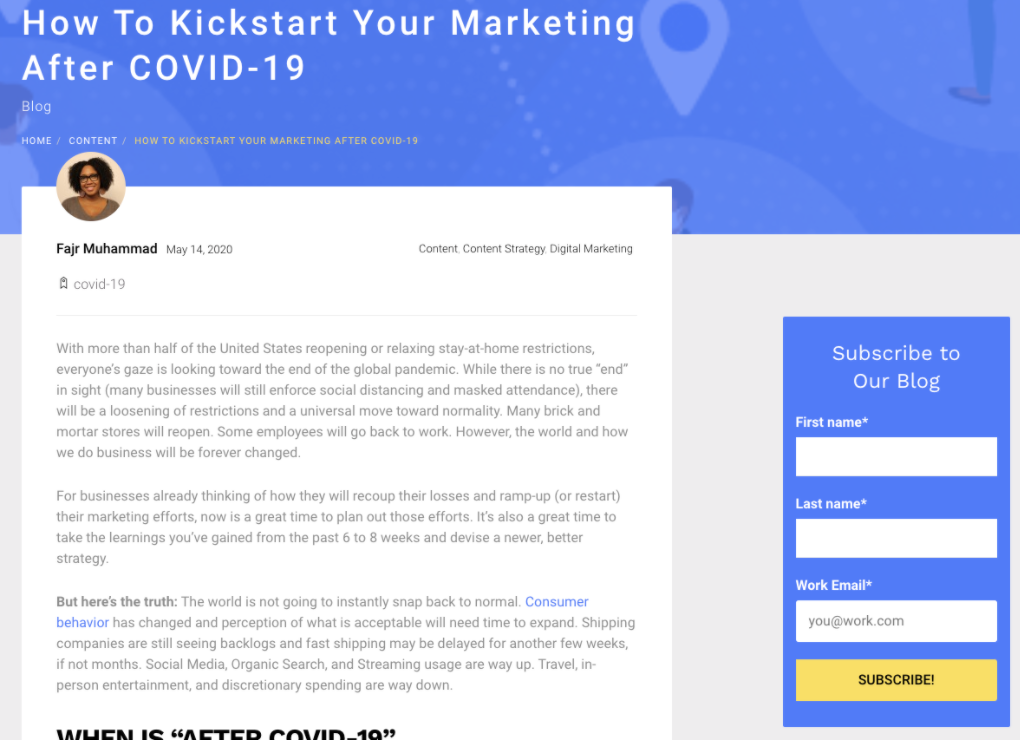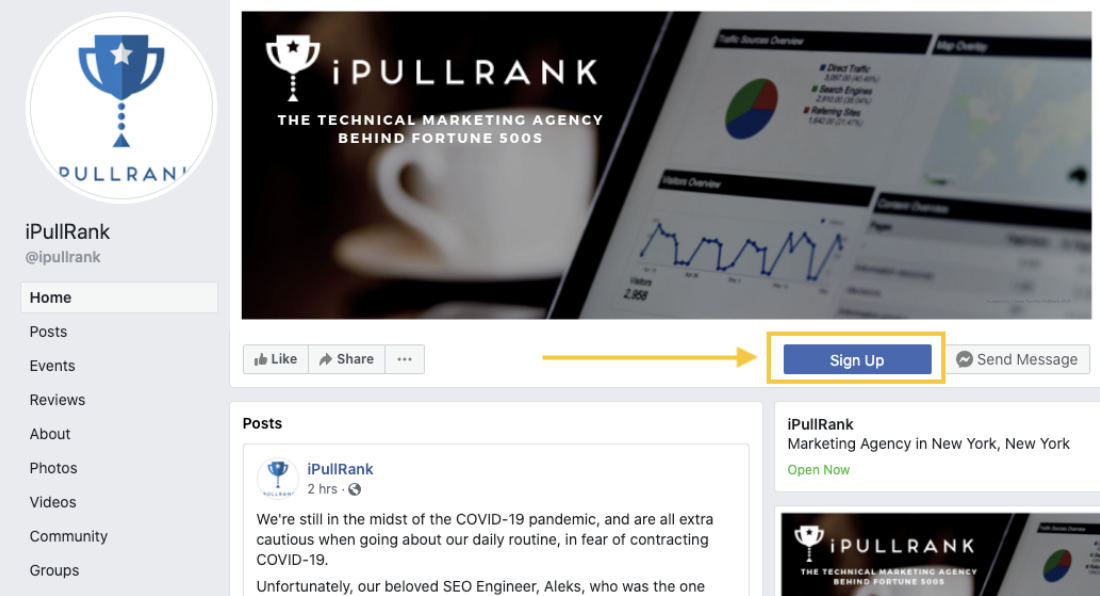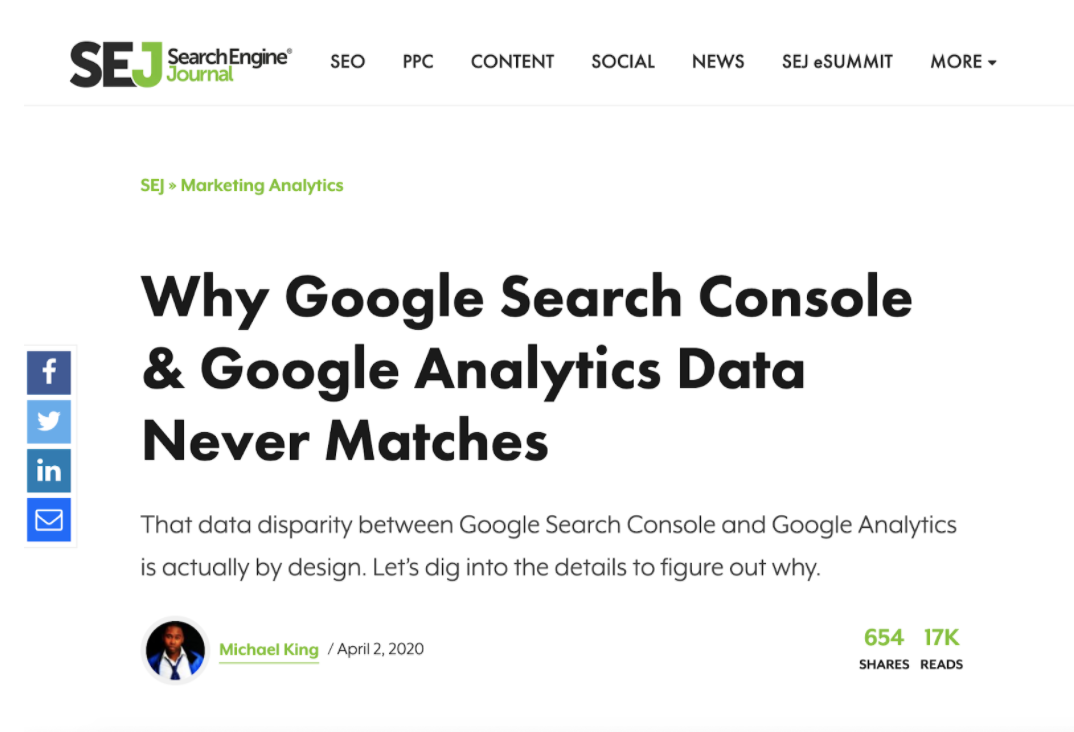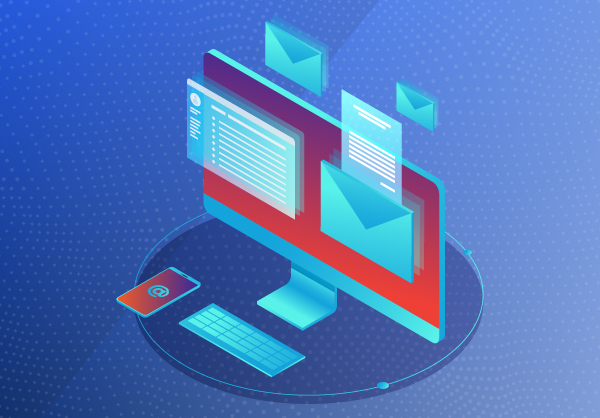Email most likely takes up a big portion of your day. You use it to communicate with your colleagues, vendors, and clients. You get a lot of your news and updates via email. You forward on great sales, interesting articles, and your favourite memes to friends. You may even catch up with your prince friend from Nigeria who’s hit a really bad time financially, lately (love that guy).
However you use email, it’s nothing fancy. Emails are there to keep projects moving and communication flowing, right? Why would something you’ve connected to all your devices and use every single day be considered a powerful… oh.
It shouldn’t come as a surprise then that email is one of the most successful ways to reach and convert audiences. Besides the fact that email marketing is served to an opt-in audience who have already agreed to hear from you regularly, email marketing is also served in a very personal way.
Think about how people read emails. On their work computers, sure, but also on their personal laptops and phones, at home while watching their favorite show, in bed before falling asleep, and even on the toilet – that’s personal (intimate, even). So if you’re connecting with your audiences via email marketing, you better make sure it’s worth interrupting personal experiences to read.
What is an Email List? An email list is a database of audiences that have opted in to hearing from you via email. This type of data is considered hugely valuable for converting and communicating with an engaged audience.
https://ipullrank.com/5-steps-to-integrating-seo-and-ppc-in-your-organization/
The Importance of Building a Quality Email List
Building a robust email list with quality contacts is essential to creating effective email marketing campaigns that show a good return on investment. There are many different ways to build and segment email lists. How you generate a database of engaged email audiences depends on your marketing goals, audience personas, and the strategies you’ve put in place to communicate to those audiences. Here are six of the best strategies for how to build an email list fast:
1. Collect Emails on Your Website
Your own website should be the first tool you use to collect email addresses and build lists. There are many different ways to generate sign ups, with some showing better results than others. Floating forms, pop ups, and including calls-to-action (CTAs) in content copy are some of the most common ways to collect email addresses on your website.
Floating Email Forms
Floating forms can appear in your website sidebar, navigation, or footer and ‘float’ along with the user to ensure the form and CTA are always visible. These are a great way to ensure your sign up is easy to find and always visible in a way that’s not too intrusive.

Pop-up Email Forms
Pop up forms are windows that appear on websites asking people to sign up for email communication. We’ve all seen them, we all hate them, but they’re effective – way more effective than floating forms. To optimize their messaging and improve conversion rates (not to mention, make them slightly less annoying), we’d highly recommend adding some kind of incentive, like an exclusive discount or free ebook for signing up. Additionally, make sure you don’t serve the pop up to visitors who have already signed up. (Seriously, don’t make me come back there.)
Content calls to action
Calls-to-action (CTAs) are subtle or clear calls to sign up within your website content. These could be on landing pages, blog posts, or even videos. Placing a call to sign up at the end of your content is a great way to keep the conversation going with an engaged user and build a quality database. Not only has this visitor absorbed your content until the end, but they’ve also opted to see even more from you. That’s the kind of email address you want in your database.
2. Create Gated Content Worth Signing up for
Data is worth something, and consumers are becoming more and more aware of that. It’s easier to convince someone to share that data (like an email address) in return for something just as valuable.
Gated content is content that can only be accessed by providing information, like your name and email address. Informative content like ebooks, videos, guides, lessons, and articles are often gated to entice users. Also referred to as “lead magnets”, this technique can be hugely successful if the content is valuable enough.

3. Build Email Lists Using Social Media
One of the easiest ways to collect email addresses for your marketing list is through social media. The nature of social media can be very similar to email – you have an audience that’s already interested in what you have to say and has chosen to engage with you. This makes social followers a high-quality list of users that should be more likely to convert to email subscribers. When using social media to generate email lists, your approach can be organic or paid.
Organic Methods
Free social media techniques for collecting emails include adding a CTA to your page, which can be a simple link in your Facebook, Twitter or Instagram bios, or an actual sign up button where allowed (like on Facebook pages).
Another method is asking your followers to sign up with an organic post in news feeds or stories, which you can pin to the top of the feed or add to highlights on your profile. You’d be surprised at how effective simply asking your audience to sign up can be.

Paid Methods
Paid social media tools are particularly useful for reaching audiences outside of your existing followers and targeting specific personas. Besides having the ability to serve your ads to audiences you want to sign up to your email list, sponsored posts and paid ads can be optimized specifically to generate leads. Lead generation ads are particularly good at building email lists as they are easy to use for audiences. Email addresses and other data can be automatically generated, making the task of submitting data a single-click experience. The easier the experience, the more likely you are to collect data.
4. Collecting Emails at Events
When physical gatherings are once again allowed, events like trade shows, seminars, and launches are a fantastic way to collect email addresses from high quality leads. Many might overlook this method, but a pen, paper, and clipboard can be a hugely successful technique for gathering email addresses when in the hands of a person who represents your brand well.
Add Connection to Your Communication
Besides the fact that you’ll be approaching audiences who are already within your target market (they’re attending this event, and assuming you have something to do with it, your interests are aligned), you also have the added opportunity to put a face to a brand. A bit of humanity, through a smile or short conversation, is a great way to build relationships with audiences ahead of reaching out via email.
Add Incentive with a Competition
One technique often used when collecting emails at physical locations is to include a competition or giveaway. By offering a prize or reward for signing up, you’re giving people incentive to provide you with their data. Be sure to keep the desired target audience in mind when using this technique however. Providing an incentive that doesn’t align with your brand could result in a large amount of email addresses that don’t yield any future conversions. As an SEO agency, for example, iPullRank could better attract the right quality of emails by offering a free webinar, course, or SEO audit as a prize, rather than a trip for two somewhere exotic. Aligning the prize to your brand ensures you’re gaining quality data and not just building quantity.
5. Reach New Audiences with Guest Blogging and Native Advertising
By featuring content on other websites, you’re able to expand your reach beyond your owned and earned channels. Guest blogging (usually free) and native advertising (usually paid-for) placed on the right websites are two great ways to expand your communication channels and reach new audiences that are more likely to sign up to your mailing list.
Guest Blogging
Guest blogging can be done by starting a conversation with a website that aligns with your brand. While some may be competitors and have no interest in featuring you on their website, others are aimed at engaging with like-minded communities and creators. For example, as a fashion brand you may not want – or be permitted – to guest blog on another fashion brand’s website. But you may be able to guest blog on a fashion publication or a fashion community website that’s brand agnostic.

It all starts by finding appropriate websites and communities where you can share your knowledge and reaching out. Establish guidelines, understand their audiences and what they respond to, and be sure to confirm you’ll be allowed to collect email sign ups. While not everyone will be interested in having guest bloggers, those who do may want the same in return. So be prepared to allow for that possibility.
Native Advertising
Native advertising is content written by you or your brand that appears on other websites or online publications and matches their style. The point of this type of content is to blend in and look like the other content already on the website. Unlike guest blogging, native content usually needs to be paid for and will include a subtle indication that it’s sponsored or an advertisement.
The benefit in native content lies in your ability to say exactly what you want, and have it look more like a piece of content than an advert. Native advertising can see 15% higher click-through rates, even when clearly marked as being sponsored. This is because content is on a website they trust and are engaging with regularly.
6. Grow Your Existing Email Database
While many of the techniques mentioned here relate to how to build an email list from scratch, many of us already have some kind of existing database to work with. No matter the size, all leads are potential conversions and can be used to grow your email subscriber list. Now it’s important to know how to best use and nurture those email lists with segmentation, content, testing, incentives, list updates and understanding regulations.
Segmentation
Before you even start collecting emails, you need to know what audiences you want to attract, and what you want to communicate to each audience. These two vital pieces of information will help you create segmented lists that are tailored to achieving your business goals and objectives.
The reason segmentation is so important is because it gives your communication focus, and provides better insight into what is likely to lead to conversions. You want to be sending the right messaging to the right audience. For example, if you try to sell someone a product they’ve already bought, you’ve lost any trust you’ve built with that person up until now. And customer retention is something you want to focus on since, according to research, it’s not only cheaper to retain a customer than attract a new one, it’s also better for profits.
Send Great Content
While a lot of strategy, energy, and time goes into collecting email addresses, that’s only the start of what really needs to be done. Now that you’ve convinced someone to part with their details, it’s time to engage your captive audience.
In order to make use of your email list, you need to send emails worth opening. Strong subject lines, engaging content, and convincing CTAs are all tools you can use to ensure your emails are converting. What conversion looks like will depend on your business goals and the list you’re sending to. Whatever that goal is, make sure your emails are always providing value to the recipient or you’ll risk losing them to competitors.
Always Test
Whatever tool, technique, or messaging you’re using to market to customers, testing is always recommended. Consumer habits, preferences, and tastes change frequently and it’s never okay to make assumptions about how and when your content is absorbed.
Email is one of the easiest marketing tools to test, and the insights the results provide can impact ROI by 37%. Here are the main segments of an email we’d recommend you test regularly:
- Subject lines: This is the first thing your recipients will see. Getting them to open an email is essential.
- Sending date and times: You’d be surprised how many “never send emails on these days of the week” advice has been proven wrong and resulted in exceptional performance.
- Creative: Email is a great tool for testing different creatives. Keep the various email clients, operating systems, and devices of your audience in mind when testing creative.
- CTAs: If the main objective of your emails is to drive traffic or convert to sales, CTAs are essential. Testing the use of different words, buttons, and placements can do a lot to influence performance.
- Send frequency: How often are you talking to your lists now and how regularly should you be? Sending too many – or too few – emails can impact performance. Make sure you’ve tested what frequency works best for your audience as well as your objectives.
Encourage Sharing and Forwarding
Email marketing is an engaging form of communication and can be used to generate even more leads. By simply including the option to share or forward emails with friends, you’ve given users the opportunity to consider the choice. While simply asking may be enough, it’s also possible to provide incentives like prizes, discounts, or free products for sharing with a certain amount of other friends. Like with any incentive, be sure to align the reward with your brand to generate more quality leads and not simply numbers.
Regularly Update Your Email Lists
When you get good at building your email database, it can be easy to forget about the email list you have and focus on adding more. To really get the most out of your subscribers and ensure you’re converting at the highest rate possible, you need to keep your email lists clean.
This task starts with deleting useless addresses. People may have moved jobs, changed email addresses, added you to a spam list or may not be interested anymore. Having low quality email addresses can skew your reporting and mislead strategy, so it’s important to get them off there.
It’s also possible to reinvigorate old email lists by reaching out to under-engaged audiences with something irresistible. It’s possible you have an audience that actively reads your content but never clicks through, or those who have become used to marking your emails as read with the intention to read them “one day”. By providing them with a unique email aimed at reinvigorating them, you could do a lot to improve the conversion on an audience that needs a small nudge.
Regulations
Data is valuable and there are a lot of new and developing regulations surrounding personal data, including email addresses. Once you have that information, you need to be sure systems are in place to segment and anonymize that data. The last thing you want to be doing is looking at the data to manually segment or move. That’s a potential invasion of privacy and something you need to automate from the start.
Keep an eye on regulations and legislations around email and data privacy at both a local, national and international level. Emails are very easy to send, and once they hit inboxes outside of your environment, they’ll be held accountable to those legislations, too.
The General Data Protection Regulation (GDPR) is a well-known law that governs how email addresses may be used and communicated with across the EU. Besides providing strict outlines on how data can be stored and accessed, the GDPR also governs how data can be collected. For example, emails can only ever be collected when opted into. Automatically ticking that box or requiring users to opt out if they would rather not receive emails is not compliant with the law.
In the US, California is governed by the California Consumer Privacy Act of 2019, which mirrors the GDPR in many ways. While this may only affect firms that do business in California, it’s worth preparing for now to avoid having to retroactively change your email building processes in future.
Sign Up to Our Newsletter
Enjoy reading this? Then you’ll love our emails. Sign up to join our ranks and receive insightful news and content delivered straight to your inbox every week. If that’s not enough for you, we have exciting webinars to look out for and ebooks that can change the way you do business, like our forecasting ROI for SEO guide (a personal favorite of mine).
Basically, there’s no way you’re not joining our email list. So might as well get your hands on some great iPullRank content while you’re converting.








